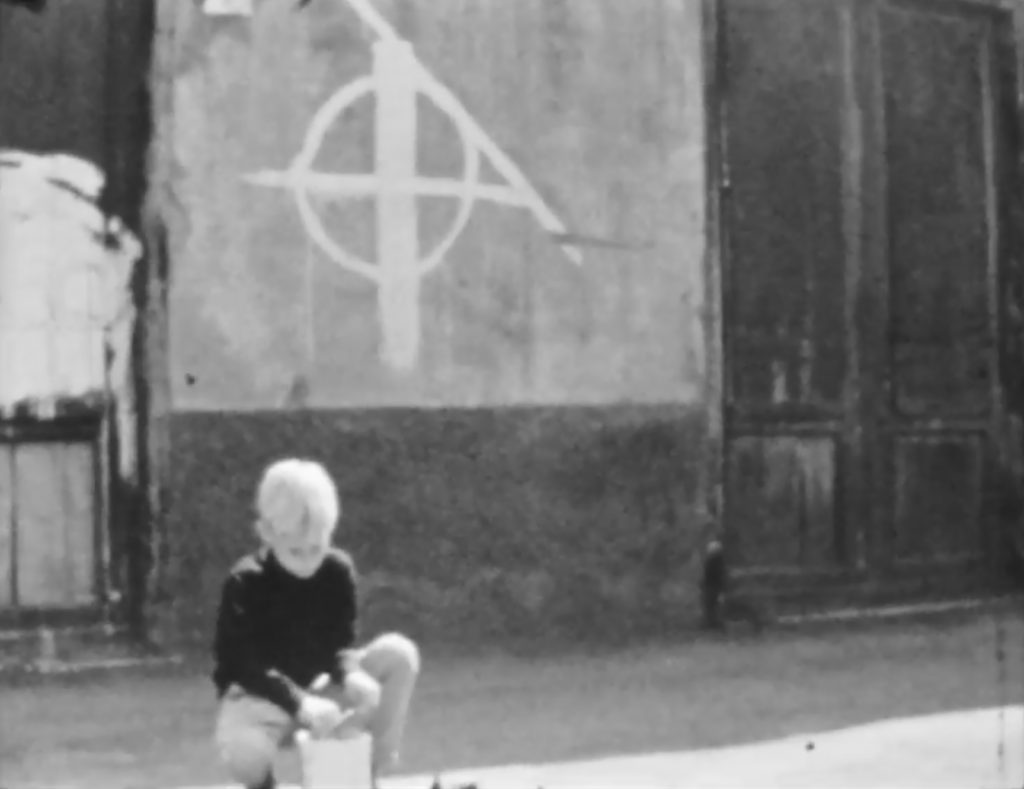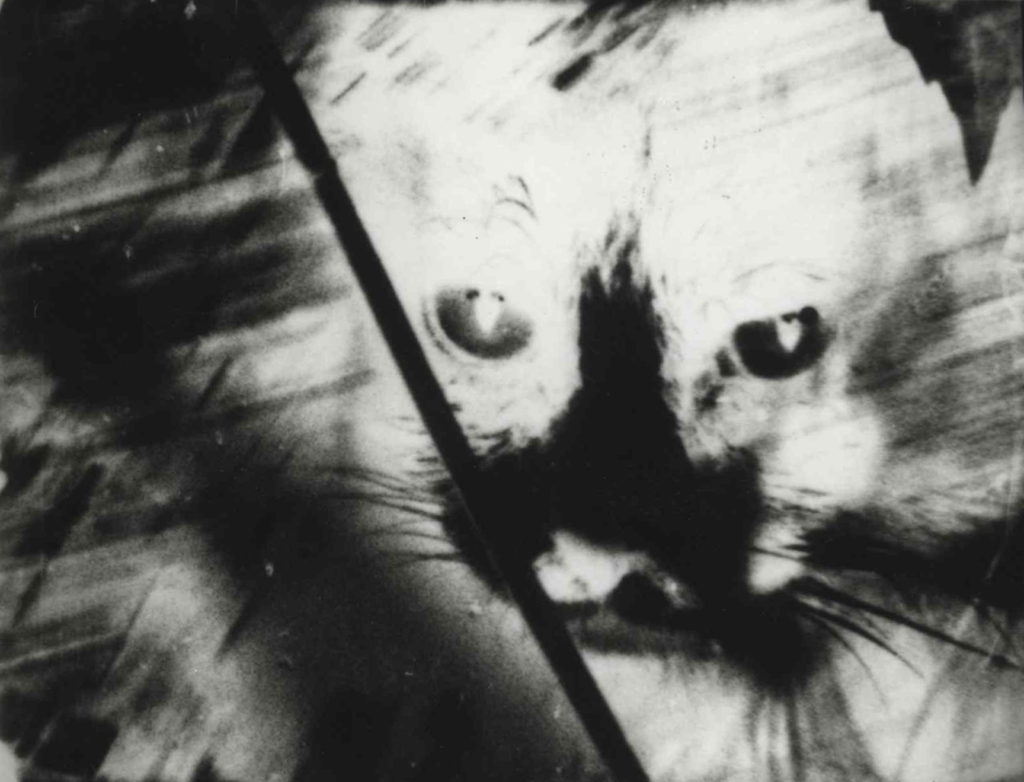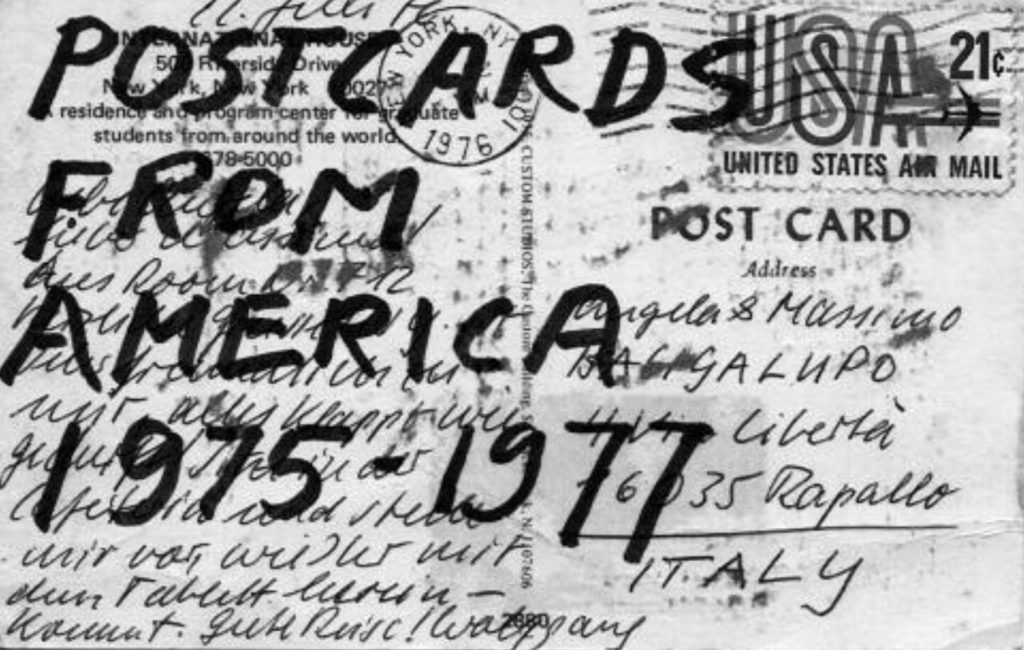Monday November 14, 7pm
Films by Massimo Bacigalupo
Artist in person
Q&A with the artist follows

Microscope is very pleased to present an evening of rarely screened films by Italian experimental filmmaker Massimo Bacigalupo, on the occasion of one of his seldom visits to New York.
After first receiving attention at the age of 19 for his independent, medium-length film “Quasi una tangente (Almost a tangent)” (1966) — which like many of his early works was shot on standard 8mm — Bacigalupo soon became a central figure in the experimental film scene in Italy as both artist and critic/theoretician. As a student in Rome he was a founding member of the Cooperative del Cinema Indipendente in 1967 — which was modeled after the Film-makers’ Co-operative in New York — and wrote film criticism for magazines such as “Film Critica,” “Bianco & Nero,” and Mekas’ “Film Culture.”
Bacigalupo’s filmmaking has been informed by American poetry and the lyrical and anti-commercial forms of the New American Cinema in New York. Shot on black & white 8mm film and often edited in camera, early ambitious films in terms of length and aesthetic, like “Quasi una Tangente” and “60 Metri per il 31 Marzo” (200 ft. for March 31st), nevertheless retain a sense of the personal. And, at the time they were made, they could be shared with friends in a living room via a small-sized 8mm projector. Located outside of the perceived epicenter of the film revolution in the US, through his oeuvre — which is infused with experimentation, everyday life, and friendship — Bacigalupo offers a unique contribution to the history of avant-garde and independent film.
The filmmaker has always had deep connections with the United States. His mother was born and raised in Elizabeth, PA, and between 1973 and 1975 he lived in New York, where he attended Columbia University and received his PhD in American Literature.
Bacigalupo will be in attendance and available for a Q&A following the screening.
General admission $9
Member admission $7
Please note: masks are required for our events at this time.
_
Massimo Bacigalupo (b. Rapallo, Italy, 1947) was a founding member of the Italian Filmmakers’ Cooperative in Rome, where he was a student. His early film “Quasi una tangente,” won first prize in the Montecatini Film Festival, 1966. He translated Stan Brakhage’s Metaphors of Vision (1970) and organized showings of the NAC in Rapallo (1965), and was a friend of Jonas Mekas, Gregory Markopoulos, and Abbott Meader. Among his films pf the 1960s-1970s is the series Eryngium (The Last Summer, Migrations, Coda… 1969-70). He went on to receive a doctorate in English from Columbia. His film “Warming Up,” largely shot in NYC, was premiered at Anthology in 1973. In 2006 the Torino Film Festival devoted a retrospective to his work, which has also been shown at the Centre Pompidou and elsewhere. An award-winning translator of poetry, he is professor emeritus of American literature in the University of Genoa. His most recent book is Ezra Pound, Italy and the Cantos (Clemson University Press, 2020). Massimo Bacigalupo lives and works in Rapallo.

Program:
QUASI UNA TANGENTE (ALMOST A TANGENT)
8mm film, b&w, 1966, 37 minutes
With: Mara Fazio (Mara), Harald Nieuwland (Harald), Peter Van Dijk
A day in the life of a young student, Paul, who commits suicide with his girl friend. We follow him in the schoolroom, where he fantasizes about space travel while the instructor goes over the dates of WW2 and his companions read “Playboy”. He walks in a city covered with postcards for coming elections. Discusses life and death with a friend, Harald, meets a pretty acquaintance, Mara, with whom he makes love, and finally turns on the gas in his study.
“The title means more or less ‘a kind of escape’. I made it up in cold blood one afternoon, thinking what would be a good and unusual word with which to begin a title. Quasi seemed just right. Tangente, from my knowledge of basic trig, happily followed. An essay by Maya Deren about filming without a tripod and getting from one place to another just with one continuous movement had been a revelation, as had Ron Rice’s The Flower Thief and Kenneth Anger’s Scorpio Rising. To my surprise, the film won first prize in the 1966 Montecatini Amateur Film Festival.”
60 METRI PER IL 31 MARZO (200 FEET FOR MARCH 31st)
8mm film, b&w, 1968, 15 minutes
With: Fabrizio Buccarella, Silvano Fua, Costanzo Lemmi, Laura Onorati, Janet Velasquez
Most of this film was shot within one day, 31 March 1968, and edited in the camera. It is divided in six episodes following an ancient Indian text, Katha Upanishad, in which a young man, Nakiketa, converses with Death. Every section presents an event of that day and refers to a writer and a painter. The story moves from a room to a garden to a quiet water-surface as the afternoon goes on. Then there is an amorous encounter, a bit of fun among youngsters playing cops and robbers, and a boy and girl quietly awaiting the night.
“The six ‘Vallis’ or branches (as they are called in the Upanishad), each ten meters or thirty-three feet long, evoke the excitement of a spring day in which simple events bring to the mind of the implicit protagonist bits from his reading and the visual arts. Thus he is briefly haunted by (1) Ezra Pound and Kandinsky, (2) Stan Brakhage’s images and words, (3) e.e. cummings and Botticelli’s Spring, (4) John Donne, Aubrey Beardsley and Hieronymus Bosch, (5) Lawrence Durrell and Caravaggio, (6) The Upanishads and Piero della Francesca. But, as Andreas Weiland commented in a poem: ‘Let us not talk of how & to whom homage was paid, let us talk of this:/The Discovery of the Word/it is surely something to see’.”
HER
16mm film, color, silent, 1968, 5 minutes
“Her was shot as my contribution to a collective film of the Italian Film-makers’ Cooperative, Tutto, tutto nello stesso istante, which started out as a Dadaist protest against police brutality. I used a “Newsweek” cutting about the the Chicago Convention riots, about a woman being beaten up, and isolated in every line a symbolic word, which returns in the second part with an extension of its original meaning. I remember showing it with an 8mm projector at the USIS Rome Library in winter 1970 as part of a concert of American music.” — MB
CARTOLINE DALL’AMERICA (POSTCARDS FROM AMERICA)
16mm film, color, 1975, 25 minutes
With: Marjorie David, Linda Dunn, Daniel Javitch, Leila Javitch, Jonas Mekas, Pia Rekola, «Sam», Dieuwke Schreuder, Karel Vosskühler, Victoria Yablonsky
After the author’s period of experimentation, these American notes are extremely straightforward. As in Migration, however, this America could be a more remote country, and the inspiration is avowedly Japanese (Basho’s Narrow Road to the Deep North). Implicitly, the film-maker compares himself to an old peddler of drawings, Sam, hawking his wares at the entrance of Columbia’s Butler Library. A recently restored version, with the original soundtrack.
RICERCAR
16mm film, color, sound, 1973, 8 minutes 30 seconds
Recovered silent 16mm footage from New York, 1973, edited, with a soundtrack, in memory of my wife, the dancer Angela Kirsten. A reflection on art, time, loss, and permanence through the foregrounded medium of film. Elsewhere on YouTube you can see the unedited overexposed reel of Angela dancing Balanchine’s “Ricercar”, the reel which is here corrected and placed in the larger context of winter and spring, life and the seasons.The original footage was scanned by Home Movies, Bologna, and Aleksandr Balagura assisted with editiing and suggestions. When in 1975 I shot in New York my film “Postcards from America”, Angela asked me if I was going to use this material (which she had not seen). “But”, she added, “I would not like to be a postcard”. — MB

